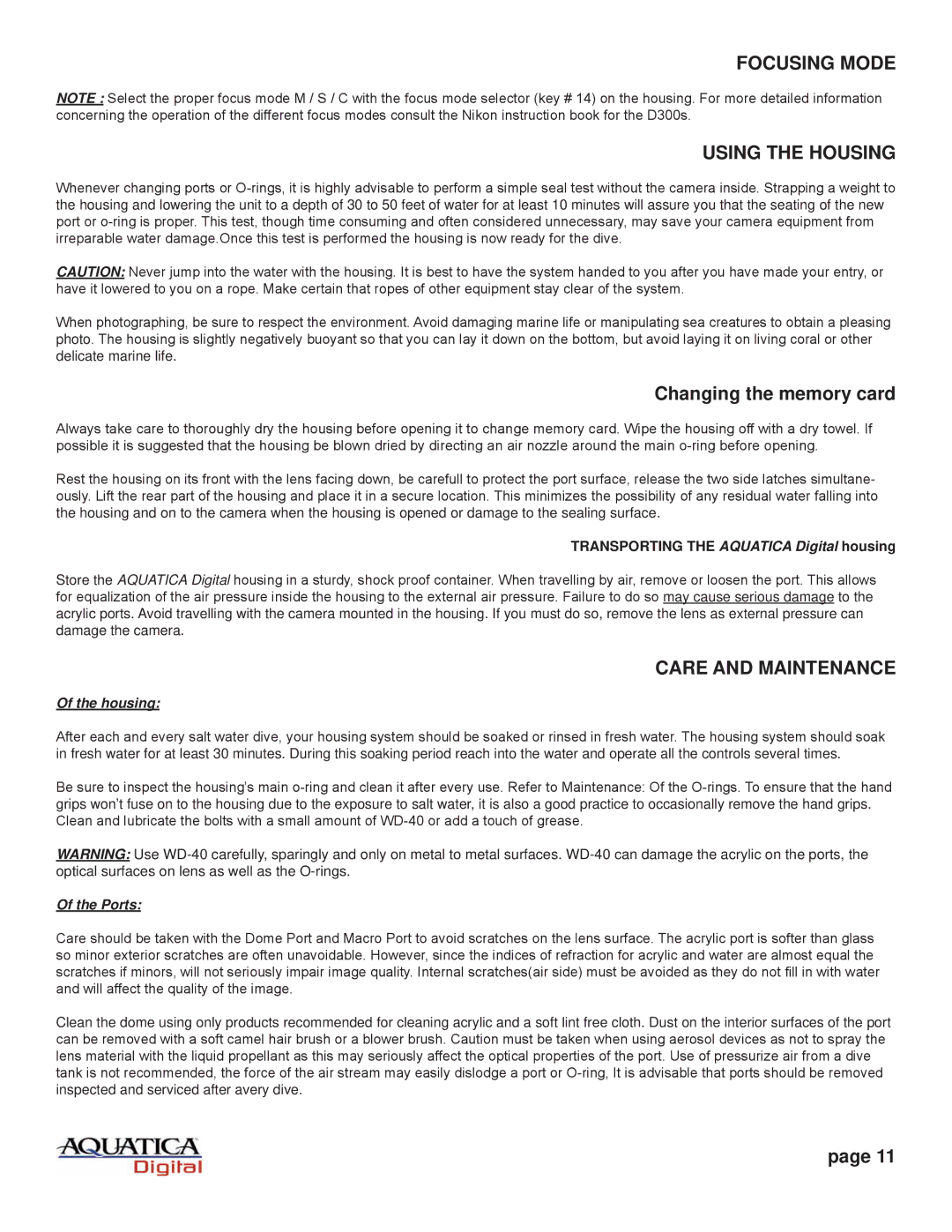FOCUSING MODE
NOTE : Select the proper focus mode M / S / C with the focus mode selector (key # 14) on the housing. For more detailed information concerning the operation of the different focus modes consult the Nikon instruction book for the D300s.
USING THE HOUSING
Whenever changing ports or
CAUTION: Never jump into the water with the housing. It is best to have the system handed to you after you have made your entry, or have it lowered to you on a rope. Make certain that ropes of other equipment stay clear of the system.
When photographing, be sure to respect the environment. Avoid damaging marine life or manipulating sea creatures to obtain a pleasing photo. The housing is slightly negatively buoyant so that you can lay it down on the bottom, but avoid laying it on living coral or other delicate marine life.
Changing the memory card
Always take care to thoroughly dry the housing before opening it to change memory card. Wipe the housing off with a dry towel. If possible it is suggested that the housing be blown dried by directing an air nozzle around the main
Rest the housing on its front with the lens facing down, be carefull to protect the port surface, release the two side latches simultane- ously. Lift the rear part of the housing and place it in a secure location. This minimizes the possibility of any residual water falling into the housing and on to the camera when the housing is opened or damage to the sealing surface.
TRANSPORTING THE AQUATICA Digital housing
Store the AQUATICA Digital housing in a sturdy, shock proof container. When travelling by air, remove or loosen the port. This allows for equalization of the air pressure inside the housing to the external air pressure. Failure to do so may cause serious damage to the acrylic ports. Avoid travelling with the camera mounted in the housing. If you must do so, remove the lens as external pressure can damage the camera.
CARE AND MAINTENANCE
Of the housing:
After each and every salt water dive, your housing system should be soaked or rinsed in fresh water. The housing system should soak in fresh water for at least 30 minutes. During this soaking period reach into the water and operate all the controls several times.
Be sure to inspect the housing’s main
WARNING: Use
Of the Ports:
Care should be taken with the Dome Port and Macro Port to avoid scratches on the lens surface. The acrylic port is softer than glass so minor exterior scratches are often unavoidable. However, since the indices of refraction for acrylic and water are almost equal the scratches if minors, will not seriously impair image quality. Internal scratches(air side) must be avoided as they do not fill in with water and will affect the quality of the image.
Clean the dome using only products recommended for cleaning acrylic and a soft lint free cloth. Dust on the interior surfaces of the port can be removed with a soft camel hair brush or a blower brush. Caution must be taken when using aerosol devices as not to spray the lens material with the liquid propellant as this may seriously affect the optical properties of the port. Use of pressurize air from a dive tank is not recommended, the force of the air stream may easily dislodge a port or
page 11
